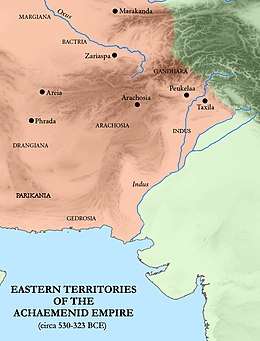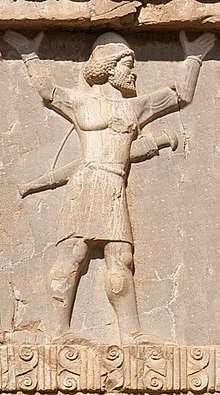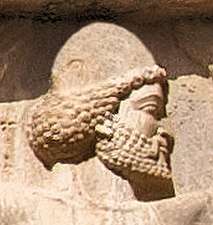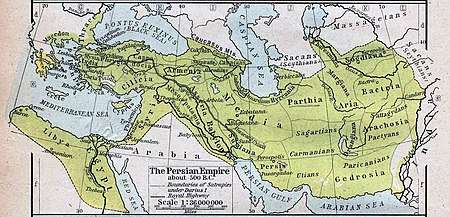Gandāra
Gandāra, or Gadāra in Achaemenid inscriptions (Old Persian cuneiform: 𐎥𐎭𐎠𐎼, Gadāra, also transliterated as Gandāra since the nasal "n" before consonants was omitted in the Old Persian script, and simplified as Gandāra or sometimes Gandara)[1] was one of the easternmost provinces of the Achaemenid Empire in South Asia, following the Achaemenid invasion of the Indus Valley. It appears in various Achaemenid inscriptions such as the Behistun Inscription, or the DNa inscription of Darius the Great.[2]
h-rw-ḫ-d-y
Gandāra
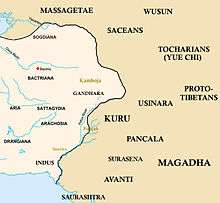
The Province was also referred to as Paruparaesanna (Greek: Parapamisadae) in the Babylonian and Elamite versions of the Behistun inscription.[2] The extent of this province was apparently wider than the actual geographical region of Gandhara.[3]
According to Herodotus, soldiers of Gandāra participated to the Second Persian invasion of Greece circa 480 BCE.[4] They had a different equipment from the Hindush, rather akin to that of the Bactrians, and were under the command of Artyphius son of Artabanus:
The Bactrians in the army wore a headgear most like to the Median, carrying their native bows of reed, and short spears. (...) The Parthians, Chorasmians, Sogdians, Gandarians, and Dadicae in the army had the same equipment as the Bactrians. The Parthians and Chorasmians had for their commander Artabazus son of Pharnaces, the Sogdians Azanes son of Artaeus, the Gandarians and Dadicae Artyphius son of Artabanus.
— Herodotus VII 64-66
The depiction of Indian soldiers and the names of the three Ancient Indian provinces including Gandāra still appear in trilingual cuneiform labels above their respective figures on the tomb of Artaxerxes II (c.358 BCE).[5][6][7]

See also
References
- Some sounds are omitted in the writing of Old Persian, and are shown with a raised letter.Old Persian p.164Old Persian p.13. In particular Old Persian nasals such as "n" were omitted in writing before consonants Old Persian p.17Old Persian p.25
- Perfrancesco Callieri, INDIA ii. Historical Geography, Encyclopaedia Iranica, 15 December 2004.
- Eggermont, Alexander's Campaigns in Sind and Baluchistan 1975, p. 177: "One should, therefore, be careful to distinguish the limited geographical unit of Gandhāra from the political one bearing the same name."
- Herodotus VII 64-66
- Olmstead, History of the Persian Empire 1948, pp. 291–292: "The Gandarians thus make their last appearance as Persian tribute paying subjects in the lists of Artaxerxes, though the land continued to be known under the name of Gandhara down to classic Indian times."
- Inscription A2Pa of Artaxerxes II
- Lecoq, Pierre. Les inscriptions de la perse achemenide (1997) (in French). pp. 271–272.
